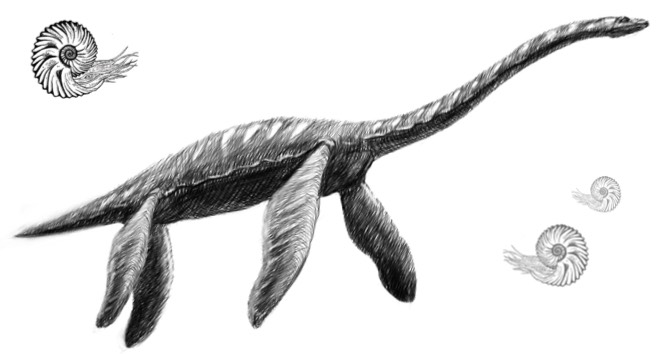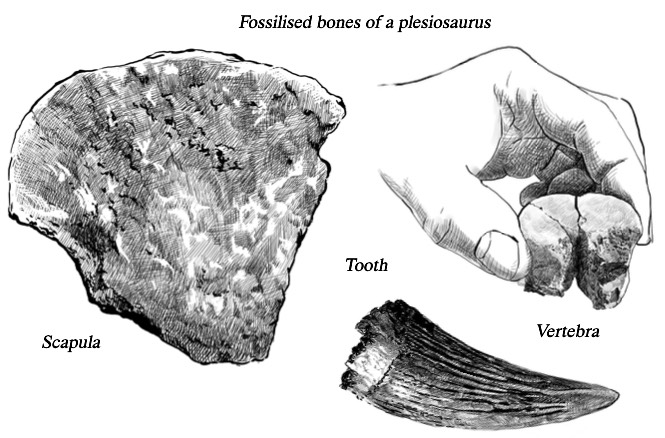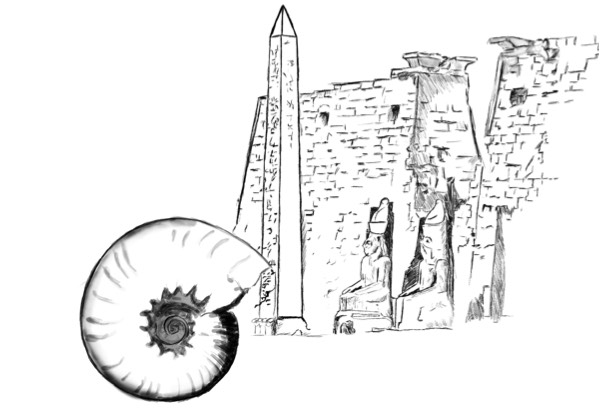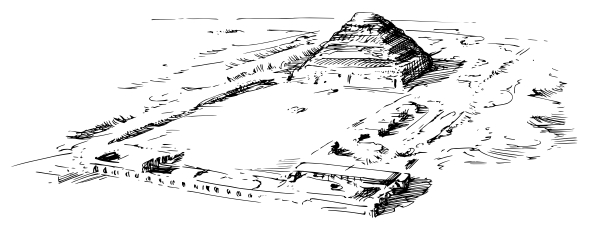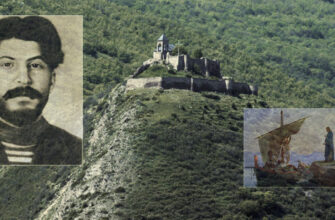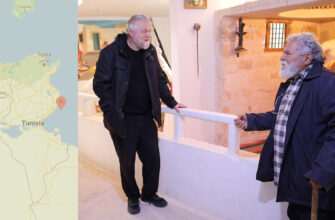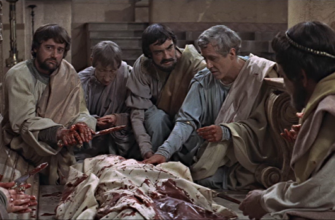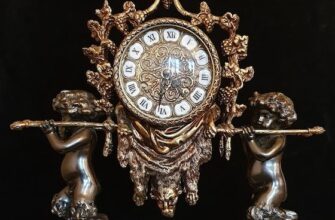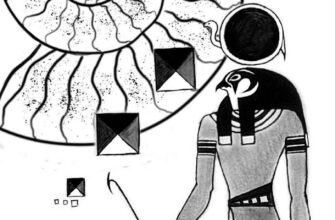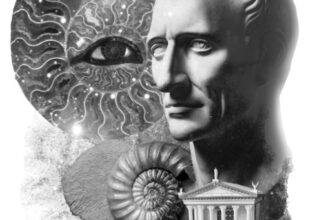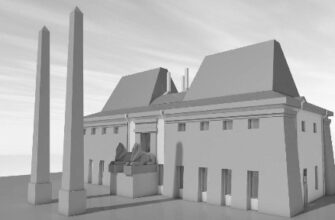Disclaimer: this chapter is translated by DeepL. The text will be updated after the translation has been corrected by a professional editor.
How plesiosaurs reproduced, as they lived in the water, but had lungs to breathe air, paleontologists have been arguing for almost 200 years – since the advent of paleontology. Some paleontologists strongly affirm that plesiosaurs got ashore and laid eggs – in large quantities. Otherwise, why did they need to breathe air at all, if they could stay permanently in the water and live without a care? Other scientists no less weighty affirm that the plesiosaurs could not get out on land using their flippers, therefore they were viviparous, gave birth directly in the water in which they lived.
Similarly, they argue about the neck of plesiosaurs. The neck of the plesiosaurs was thin and very long, up to six meters long, longer than the body and tail combined. There is a famous anecdote in the history of science: when a sufficiently complete skeleton of a plesiosaur was found and they attempted to assemble it, the skull of the plesiosaur was placed on the tip of its tail, whereas its long neck was declared the tail. This is how incomprehensible is the meaning and design of the neck of the plesiosaur.
However, some paleontology scientists strongly affirm that the neck of the plesiosaurus is very mobile, thus the plesiosaur was able to hunt effectively even flying dinosaurs. Indeed, once a specimen of a plesiosaur was discovered, in whose stomach were found a flying dinosaur, fish and an ammonite. Other scientists declare with confidence, that it has been scientifically proven, that the neck of the plesiosaurs was almost motionless. What up the famous contents of the stomach, as the author overthinks for the proponents of this opinion, the flying dinosaur could be devoured already dead. Like everything else, also dead – the fish, the ammonite.
Thus, it turns out that there is almost nothing veraciously known about the life of plesiosaurs. Only those epochs are known, in which they lived in parallel with the ammonites, and, apparently, dominated numerically. Well, also is know, that lived in water, but breathed atmospheric air. It is also known, that the life of plesiosaurs was troublesome – they were eaten, at least by liopleurodons, some toothy little creatures. Well, also diseases must have been pestering.
Also, it is known, that plesiosaurs are very popular among people – what is especially interesting, they make up the content of human daydreaming. The Loch Ness Monster, as it is well known, is considered to be a plesiosaurus. Mary Anning is famous for being the first to find the skeleton of a plesiosaur, and it may very well be, famous only because it was the skeleton of a plesiosaur, and not of some other monster. Had the skeleton belong of some other marine creatures, it may very well be that of Mary Anning no one would have remembered. Only specialists know about Amalitsky, and that, perhaps, only in Russia, however about Mary Anning the crowd knows too.
Interestingly, dinosaurs are very popular among the crowd – just like dogs, horses and curs. After all, as we can see, plesiosaurs, which are not dinosaurs, are also abnormally popular! People should have considered the plesiosaurus a dinosaur. And they did, and this false identification is even incorporated in the name – after all, the plesiosaurus is translated as “similar to a dinosaur”. So that from a science point of view, a plesiosaurus is not a dinosaur. Then why is the plesiosaurus as attractive to the crowd as the dinosaurs? Where did such an exception come from?
Now we will try to illustrate that the reason for the interest in plesiosaurs is of a completely different origin than the interest in dinosaurs, horses, pigs and dogs.
The fact that plesiosaurs are special for the perception of people, I learned not only from books. While watching another video tour of another large private paleontological museum already at the “GOK” (mining and processing plant), and the tour was guided by a very boring paleontologist, I was struck by the intonation of the words of this paleontologist, uttered with enthusiastic aspiration, that say there is even a plesiosaurus tooth in their museum. Wow unique achievement for a museum crammed with bones of other marine animals, contemporaries to plesiosaurus! There is plenty of bones of these animals in the museum, whereas from the plesiosaurus, the most numerous, nothing at all? How can this be? Maybe there is some subconscious reason why he, this suggestive boredom paleontologist, namely plesiosaurus bones does not even want to see?
Maybe the story is similar to the oddities in the perception of ammonites? Not showing an ammonite in a paleontological museum – is about the same as not to mention the name of Stalin when writing military memoirs about the Great Patriotic War (World War II). As the saying goes, he did not notice the elephant (можно сменить поговорку: He visited Rome and did not notice the Pope). Then so, a certain type of paleontologists does not want to see ammonites in the museum exhibit, and the same type of paleontologists do not want to see the remnants of plesiosaurus even in the open pit. But why exactly this couple – ammonites and plesiosaurus? It turns out that there is some trait that is unifying them? Distinguishing them among the large number of their contemporaries? I wonder which one.
The second factor, which made me pay attention to plesiosaurs and presume some kind of astonishing relationship between them and ammonites, is exactly opposite and is also related to the preferences of the subconscious. We will refer to the findings of one of our teams from our “Museum of heroes as role models of luckiness”, all at once a tooth of a plesiosaurus, a shoulder blade of a plesiosaurus and one of the vertebrae either from the tail or from the neck of the plesiosaurus. For the Moscow region, the find of the plesiosaurus is not just rare, but even the rarest. Our guys did not find any other bones, only the bones of the plesiosaurus – moreover in different places. It is an opposite situation from the one of that director-paleontologist: the subconscious of the guys who were actively interested in the topic of heroes and luckiness did not want to see anyone other than the plesiosaurus. Considering who found them (I recall, these were the five participants of the ongoing seminar at the Museum of luckiness), the finding of these bones is a direct sign to pay attention to them, plesiosaurus, along with ammonites. By the way, on the same day as the plesiosaurus, this team of the five seminarians found also perhaps the most beautiful ammonite among all previously found by all our teams together.
Well, the situation is similar to the one of the Englishwoman Mary Anning, who found as many as three almost complete skeletons of the plesiosaurus, while others could not find anything there.
Ammonite finds in the Moscow region are not at all surprising. After all, the Central Russian Plain used to be the bottom of a shallow sea. There is a hypothesis that the abundance of ammonites in this place can be explained by the fact that the depth of the sea here was ideal for the inhabitation of ammonites. There are, apparently, other hypotheses too. In addition, here plesiosaurs should have lived too. Then why are ammonites a great many, but few finds of bones of plesiosaurs? Nevertheless, from the point of view of geochemistry, there is a huge difference between plesiosaurus and ammonite. The shells of dead ammonites consist of calcium carbonate, the same material as reefs; therefore, nobody wants to eat shells of ammonites. In the sense that no one wants to devour these shells, especially empty ones. However, those who want to gobble up the bones of plesiosaurus are a dime a dozen. The fact is that since grass appeared on land, and it appeared later than trees, an acute phosphorus deficiency has occurred in the ocean. The phosphorus content in seawater – is analytical zero. Grass on land took phosphorus, which previously was washing into the ocean. Therefore, it went like this: if you are in the ocean and want your spine to grow, try to grab phosphorus from somewhere. Yet animal bones are a generous source of this desired element. This way the bones of the dead plesiosaurs were devoured without remainder as quickly as possible – even jostled to get a bone I suppose.
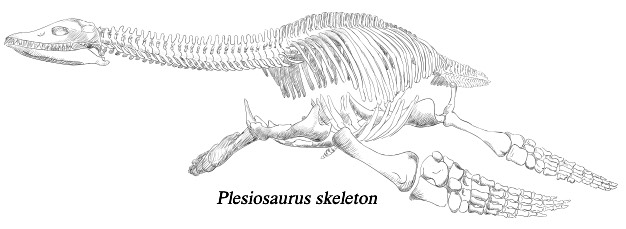
There are relatively few bones of plesiosaurus left for paleontologists, compared to the number, which could have been. Future paleontologists could be helped out, say, by a volcanic eruption, then the corpse of the plesiosaur could be wrapped in volcanic ash – as a result, the corpse was preserved and petrified over time. In addition, the corpse of a plesiosaurus or its part could have been lucky: when a plesiosaurus, this colossus, was torn to pieces and devoured by a liopleurodon, some of the bones, falling to the ocean floor, could have landed into a karst cavity, fall to the very bottom of the cavity, under a solid layer of silt, and end up in isolation from oxygen and bacteria. In this case, the bone might not have been devoured. It was namely a small karst cavity, where the permanent participants in the seminar at the “Museum of Heroes as role models of luckiness”, found the plesiosaurus bone. Yet what did carry them to examine the contents of this particular cavity? It is instructive that the seminarians, as paleontologists, were completely unprepared then, knew nothing about the possible places for preserving bones, about the geochemistry of phosphorus, and the phosphorus deficiency in the ocean water also knew nothing, but they were aware of the principles that lead the subconscious to luckiness. The bone was large though, so large that when the guys donated this bone to the Darwin Museum, in which some trifle was exhibited from the bones of the plesiosaurus, the museum employees’ hands were shaking when he was receiving the gift.
So, here is the confirmation of the truth that in paleontological searches, luck is substantially more significant than professional paleontological preparation. Remember that the named lucky fiver – is composed of participants in the seminar at the “Museum of Heroes as role models of luckiness”. Luckiness!!
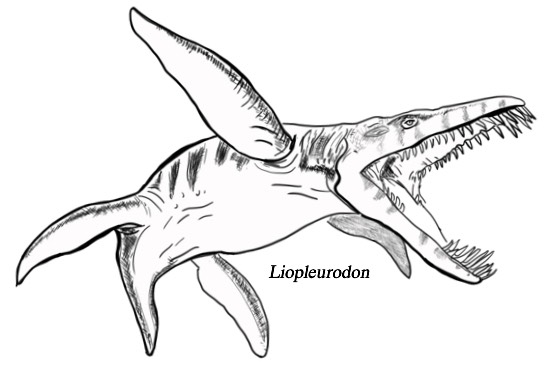
Generally, all this looked like a sign. An invitation to unravel some mystery that is significant for sacred paleontology – well, for people too.
What if plesiosaurus and ammonites formed some form of symbiosis, that is, organized some form of cooperation with each other? The science of modern organisms provides many examples of symbiosis. However, in paleontology, the topic of symbiosis is disregarded completely, because it is difficult to imagine how to trace this symbiosis based fossilized remains alone.
However, from the fact that it is difficult to imagine traces of symbiosis, it does not follow that it was not there those times. After all, from champions in mutations, that is, from individuals with highly developed comradely relationships, it is in the first instance to expect to find symbiotic ties. Moreover, with a form that is genetically distant from them as much as possible. Namely, this apartness should expand the horizons to the greatest extent possible.
Is it indeed all gone, and it’s impossible to figure out anything? Fortunately, this is not so. This is where the priests of Amon helped us out – and their sacred spirit extant in us. In ancient times, in various temples, it was customary to arrange mysteries – the Eleusinian mysteries are a good example of this. Therefore, it can be assumed, that all these mysteries of ancient times have the same origin from completely hoary antiquity – in the sense of a temple custom. Obviously, we are hinting at the cult of Amon.
The meaning of the mystery is to show participants-beginners, the contingent from which will be selected the disciples of the priests, some scenes from the life of God. In the case of the god Amon, it is necessary to show scenes from the life of ammonites and their symbiotic partners. Show their paradoxical actions, which can only be explained by a symbiotic relationship. The ones touched by the mystery – are suitable as disciples of the priests. Which means, most importantly, his subconscious is suitable for this. Instead, those who will involuntarily laugh or make faces, as the above-mentioned two directors of paleontological museums did – down with those. As the saying goes, you are welcome to get out.
However, it is impossible to engage an ammonite or plesiosaurus to a mystery – they are gone. Meaning that they do not exist anymore in the form of their visual appearance. Forcedly, they must be replaced by humans. Not with just anybody, of course, but with the chosen ones.
These spiritual descendants of the priests that went through the initiation via mystery, possibly, are the ancestors of the future actors of the legendary wandering theater troupes. Yet called buffoons. Let us recall Hamlet, how reverently he picked up the unearthed skull of the royal actor Yorick, the best of the best. Such actors, with philosophical inclinations, were also called jesters. There is a suspicion that the jester Yorick was not just a buffoon, but also the spiritual father of Hamlet, or his secret mentor – thence Hamlet has such reverence for Yorick’s skull. After all, it is his spiritual father.
No wonder that over the years, Hamlet, the Danish prince, went to roam as part of a wandering troupe of actors – afterwards, they, in such strange way, came to his aid. This was shown in our video, based on the text of Shakespeare’s “Hamlet”…
Nevertheless, with exactly the same meaning, Hamlet could pick up ammonite. Now, if Hamlet would have picked up the skull of a plesiosaur, or at least his tooth, then the meaning of what was taking place would have been completely different. Moreover, the internal state of Hamlet would have been different. However, not opposite. As for the tooth, skull or vertebra of a plesiosaurus, there is already a mixed attitude among the descendants of the priests of Amon or any other sages of some nation remote from Ancient Egypt. Because plesiosaurus – is a prototype of the red dragon, as we shall see below. Not the black or white, but only the red one. The very one, with whom “Lancelot” rules nations for the sake of their development.
This certainly, it is a sizable question: where did these ancient sacred mysteries take place? Is it really all of them inside the temple of the god Amon? Otherwise, maybe the most significant ones took place at the site of the paleontological excavations, in places where you can find both ammonites and plesiosaurs at the same time? Personally, it seems to me that the mystery would have touched a lot more if it had happened on the site of such outcrops. By the way, check out the word they are using: outcrops (in Russian – same as nudity).
Based on this consideration, it follows that in our time also, some of those who will ended up on a site of paleontological outcrops will behave very strangely. Inadequately, at first glance. Or vice versa, will be extremely adequate – from the point of view of a mystery. It seems that, finding plesiosaurus bones, moreover, in different places of the quarry, where no one had ever found them before – is an event exactly from the desired sector of the subconscious.
Howbeit, upon mysteries either in the temple of the god Amon, or on the site of outcrops or excavations, in any case, the main characters were “the dragon” and “Hamlet”. This can be represented otherwise: the dragon and Lancelot. Moreover, we can say Romeo and Juliet, who are in fact the dragon, on the one hand, and the sage monk Lorenzo, on the other, who is in fact Hamlet or Lancelot.
Creation with such roots should generate a particularly strong impact – in addition, appear especially beautiful and even magnificent. In fact, there is a considerable riddle in literary criticism regarding the content of Shakespeare’s “Hamlet”. Everything seems quite understandable to mediocrity: sort of, son is jealous of mother to her cohabitant – and everyone dies. However, the larger the literary critic, the more he concludes that, generally speaking, it is not clear what about, in fact, is he, this amazingly powerful “Hamlet”? Some go as far as to conclude that “Hamlet” is totally about nothing. In this case then it is not clear, why is “Hamlet” leaving such a strong impression of the supreme beauty? But everything becomes clear if, you tumble to, that Hamlet is a spiritual descendant of ammonites.
It is utterly clear that this impression of the supreme beauty is delivered not only by Shakespeare, but also by other theatrical and cinematic geniuses like Moliere or Mikhail Bulgakov.
A genius – is someone who is able to use the resources of his subconscious, in the sense of penetrating through the mechanisms of ancestral memory into the depths of the past. In fact, into not so distant depths – of the times of mysteries of people of Amon.
Did you enjoy this chapter? Read the next one. Shakespeare. “Julius Caesar.” Faun
Donations from patrons will be used to translate the book “Sacred Paleontology” from Russian into English. Meniailov has already written more than 50 chapters.
One page of the final professional translation costs us 35 USD. We accept crypto and fiat.
To be continued …

